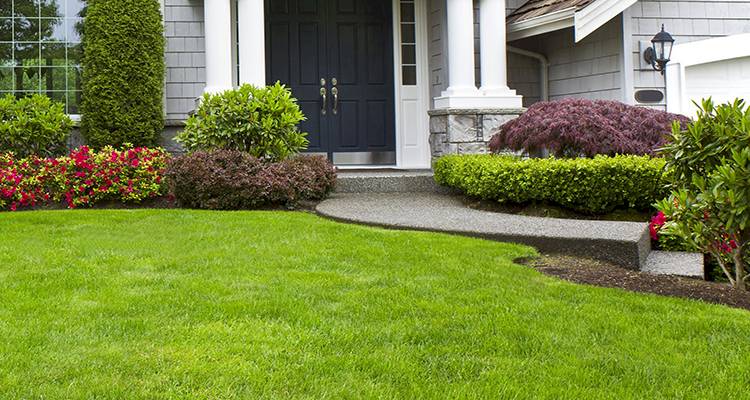Landscaping is one of the best ways to improve the look and value of your property. A well-designed landscape not only makes your home more attractive but also adds comfort, privacy, and long-term value. However, one of the most common questions homeowners ask before starting a landscaping project is: “How much should I expect to pay for landscaping?”
The cost of landscaping can vary widely depending on the size of your yard, the type of services you need, and the overall design. To help you plan better, let’s break down the average costs, what factors affect pricing, and how to make the most out of your budget.
What Influences the Cost of Landscaping?
The price of landscaping isn’t fixed. Several factors can raise or lower your final bill:
- Size of the Property – A large yard naturally requires more materials, plants, and labor compared to a smaller space.
- Type of Project – Basic lawn care and maintenance cost much less than designing an outdoor living area with patios, walkways, or water features.
- Materials Used – Natural stone, high-quality wood, and decorative plants tend to increase costs compared to standard grass or mulch.
- Labor and Design Fees – Skilled labor and professional design services are valuable but can add to your total expenses.
- Location – Landscaping prices also vary by region. For example, a project in a high-demand area may cost more than the same work in a small town.
If you’re searching for a reliable guide, you can look into services that focus on Comprehensive Landscaping in Pawcatuck, CT, where professionals often provide customized solutions based on local needs and preferences.
Average Landscaping Costs
On average, homeowners spend between $2,500 to $12,000 for landscaping projects, though small maintenance jobs may cost just a few hundred dollars. Here’s a general breakdown:
- Basic Maintenance: Lawn mowing, trimming, and simple care usually range from $50 to $200 per visit.
- Sod Installation: Installing new grass can cost between $1 to $2 per square foot.
- Planting and Gardening: Adding flowers, shrubs, or trees can range from $25 to $3,000 depending on the selection and number of plants.
- Hardscaping: Patios, walkways, retaining walls, and driveways are typically priced between $2,000 and $30,000, depending on materials.
- Full Landscape Design: A complete redesign with lighting, water features, or outdoor kitchens may range from $10,000 to $50,000 or more.
These numbers can vary, but they give you an idea of what to expect.
Hidden Costs to Keep in Mind
While most homeowners plan for the upfront landscaping expenses, there are some hidden costs worth noting:
- Irrigation Systems: Automatic sprinklers can cost from $1,500 to $3,500, depending on yard size.
- Soil Preparation: If your soil isn’t in good condition, you may need grading or fertilizing, which adds to the total.
- Long-Term Maintenance: Even after your landscaping is complete, regular care will be required to keep it looking fresh.
By preparing for these costs in advance, you can avoid surprises along the way.
How to Save Money on Landscaping
Not every landscaping project has to break the bank. Here are some ways to save:
- Plan in Phases – Instead of doing everything at once, spread your project over a year or two.
- Use Native Plants – They require less maintenance and water, reducing long-term costs.
- DIY for Small Tasks – Simple jobs like mulching or planting flowers can be done without professional help.
- Choose Simple Designs – A clean and minimal look often costs less but can still be beautiful.
It’s all about making smart choices that fit your budget while still achieving your desired look.
Why Professional Help Matters
While it’s tempting to cut costs by doing everything yourself, professional landscapers bring skill and knowledge that can save you money in the long run. They understand plant health, soil conditions, and design balance, ensuring your investment lasts for years.
For example, many homeowners in Connecticut turn to local professionals for reliable landscaping. One trusted name often recommended in the area is Blessed Blades LLC, known for creating designs that blend beauty with practicality. Their expertise helps homeowners achieve the right balance of style and function without overspending.
Long-Term Benefits of Investing in Landscaping
Spending money on landscaping is not just about looks. Here are the lasting benefits:
- Boosts Home Value – A well-designed yard can increase property value by up to 15%.
- Energy Savings – Strategically planted trees can reduce cooling costs by providing natural shade.
- Improved Lifestyle – Outdoor living spaces encourage family time, relaxation, and entertaining.
- Environmental Impact – Landscaping with native plants improves soil health and supports local wildlife.
Clearly, the value of landscaping goes far beyond its initial cost.
Finding the Right Landscaping Services
When choosing a landscaping service, consider these tips:
- Check their past work and customer reviews.
- Compare quotes but focus on quality over the lowest price.
- Make sure they offer customized plans suited to your property.
- Ask about ongoing maintenance options.
If you’re looking for guidance in Connecticut, many homeowners recommend exploring Comprehensive Landscaping in Pawcatuck, CT, where services are tailored to both residential and commercial needs. This ensures you get professional results and long-term satisfaction.
Conclusion
So, how much should you expect to pay for landscaping? The answer depends on your goals, property size, and chosen materials, but most homeowners spend anywhere from a few hundred dollars for basic care to tens of thousands for full redesigns. The key is to plan ahead, work with skilled professionals, and invest in quality designs that add value to your home.
Landscaping is more than just a cost—it’s an investment in comfort, beauty, and property value. With the right planning, you can create a space that fits both your budget and your lifestyle.
